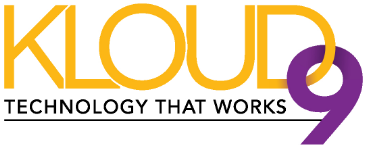The biggest tech giants, the providers of the cloud services - Amazon Web Services, Microsoft Azure, and Google Cloud are all set to provide yet another revolutionary technology of edge computing. You might be wondering what is edge computing or edge computing capabilities are?
Well, it is a technical phrase that refers to the mini data centers which would be efficiently connected to a wide range of IoT devices. This in turn would be deployed at the enterprise network’s edge instead of in the cloud.
According to the current scenario, the three main cloud service providers do not have full control over the major edge attributes such as networking, infrastructure, and location. Do you think that just with this control, the cloud services providers will be able to provide edge computing competence?
Well, the answer to this question would be Yes. It has been reported that the public cloud service provider has planned to develop edge computing services with effective partnerships.
With the cloud-based edge computing technology on the rise, it is displaying a sign that the margins between public cloud, private cloud, and edge computing are extremely blurring and nothing is clear as of now.
The major target of the cloud service provider is to ensure that the businesses and architects are offered with a range of choices based on the type of workload and its performance, reliability, regulatory, and safety requirements.
So let’s understand what are the main aspects of edge computing:
Analyzing The Requirements And Architecture Of The Edge Computing
The most essential thing that every engineering team must understand is the requirement of edge computing. Well, the computing requirement of connecting the globally distributed network is not the same as that of servicing an array of video sensors.
Why? Because the dispersed network has inexpensive sensors that are capable of producing terabytes of data on the regular basis. Whereas the video sensors process petabytes of data in real-time. So it is understood that the requirement would be different. The architecture offered by edge computing must be capable of addressing the specific data processing, analytics, and workflows needed.
The requirements of every business would be different and to cater to all the requirements needs proper planning and procedure. The major factors that determine the location, network, security, and infrastructure requirements are reliability and performance.
When the architects have a perfect understanding of the requirements only then they would be capable of defining the location of edge computing infrastructure physically. Moreover, it will also help in analyzing the types of infrastructure are required, the minimal connectivity requirements, and other design considerations
Microsoft Azure Is Expanding The Edge Zone By Using Azure Stack
Microsoft Azure has stated that its architects and the developers would mostly focus on the applications and marginally on the infrastructures. As of now, they would be having three main alternative options that will enable the hybrid edge. In the hybrid edge, the architects would be making use of the 5G network. This in turn would enable the deployment of data processing and various machine learning models, real-time data-intensive applications as well as streaming applications.
- Microsoft Azure has built a strategic partnership with AT&T to offer Azure Edge Zones at several locations including Atlanta, Dallas, and Los Angeles. This option would prove to be the best for 5G-enabled mobile applications. They would require low-latency data processing or machine learning capabilities.
- Microsoft Azure has also partnered with several data centers to enable the deployment of private Azure Edge Zone.
Learn About The AWS Services - Right From 5G Devices To Analytics
- AWS has stated that they have started supporting edge data centers with AWS Local Zones. These zones will be currently available only in Los Angeles.
- AWS Wavelength is specifically designed for enabling low-latency applications that would be running on 5G devices, along with various other connected vehicles, AR/VR applications, smart factories, and real-time gaming.
According to the reports, AWS would be offering two alternatives to edge infrastructure - AWS Snowline & AWS Snowcone. They would be beginning with AWS Snowline of appliances. AWS Snowcone is slightly different from Snowline as they refer to the smallest appliance with two vCPUs and 4GB that is primarily used for edge data storage and transfer.
Google Cloud Services are lagging behind and trying their best to catch up with the edge offerings. They made an announcement to introduce Anthos at the Edge, by collaborating with AT&T on 5G connectivity, and the Google Mobile Edge Cloud. It is basically a hybrid and multi-cloud application modernization platform enabling businesses to deploy applications on GCP and in the data center.
Summary
Well, there have been a lot of announcements and reporting but these are considered as the early days for public cloud edge computing solutions. The essential fact to acknowledge is that the tech giants - Google, AWS, and Microsoft Azure are getting serious about edge computing. With proper innovation, it would be clear whether enterprises opt for public cloud edge solutions or plan to build their own infrastructure, network, along with computing platforms.


